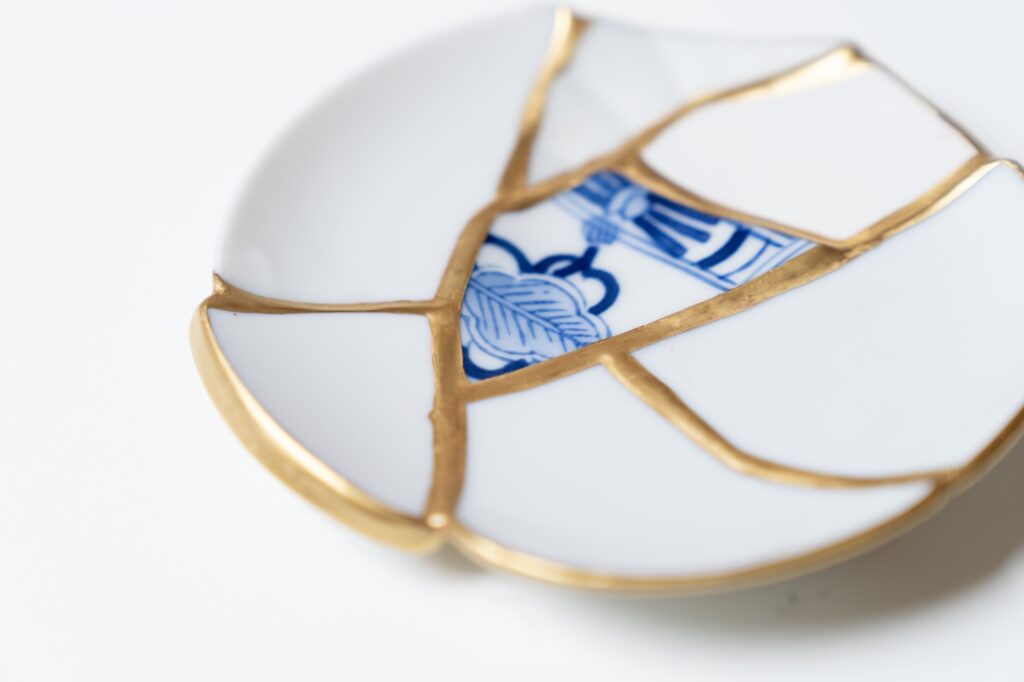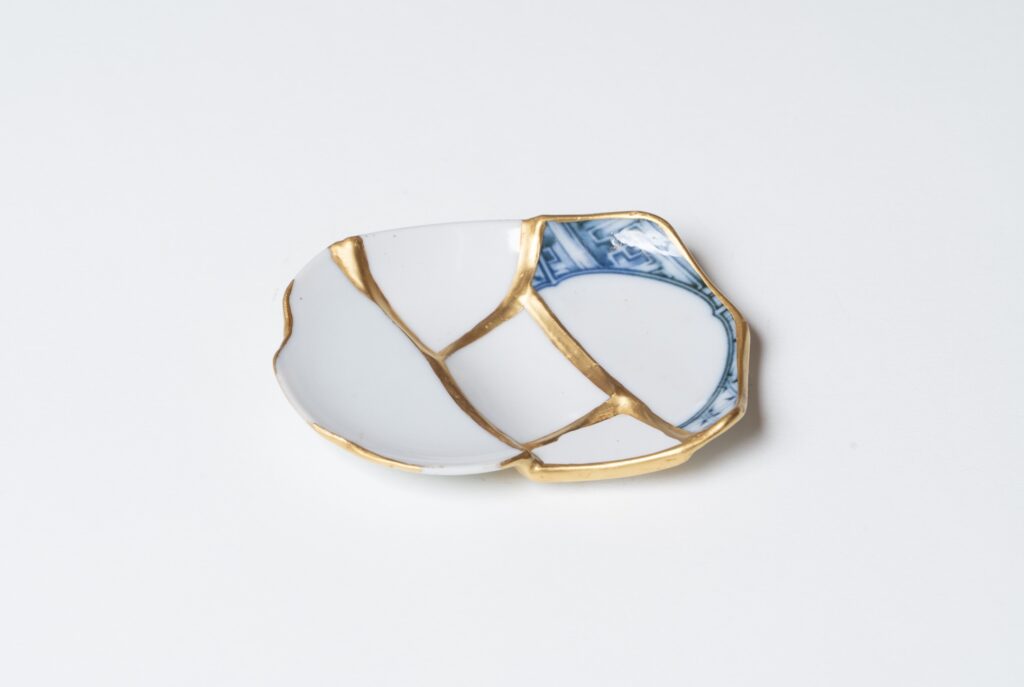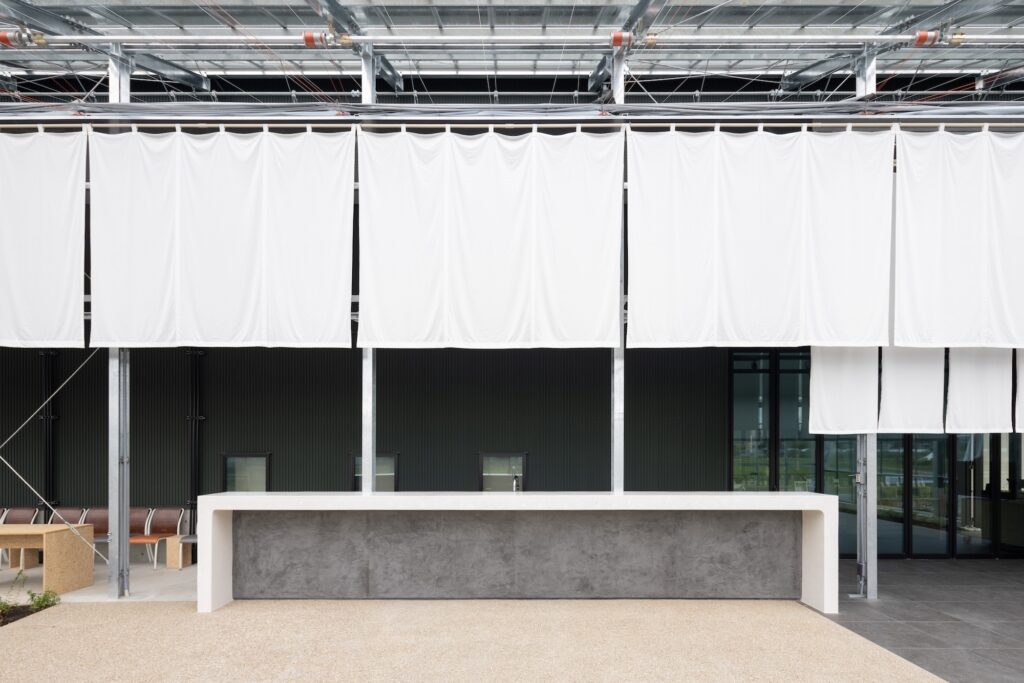Topics お知らせ
CACL × LIXIL × Yuko Nagayama & Associates Hold Joint Project Launch Event & On-Site Tour
September.10.2025
CACL × LIXIL × Yuko Nagayama & Associates Launch Joint Project to Preserve Noto’s Traditional Landscapes for the Future
Project Announcement & On-Site Tour Held with the Mayor of Suzu City
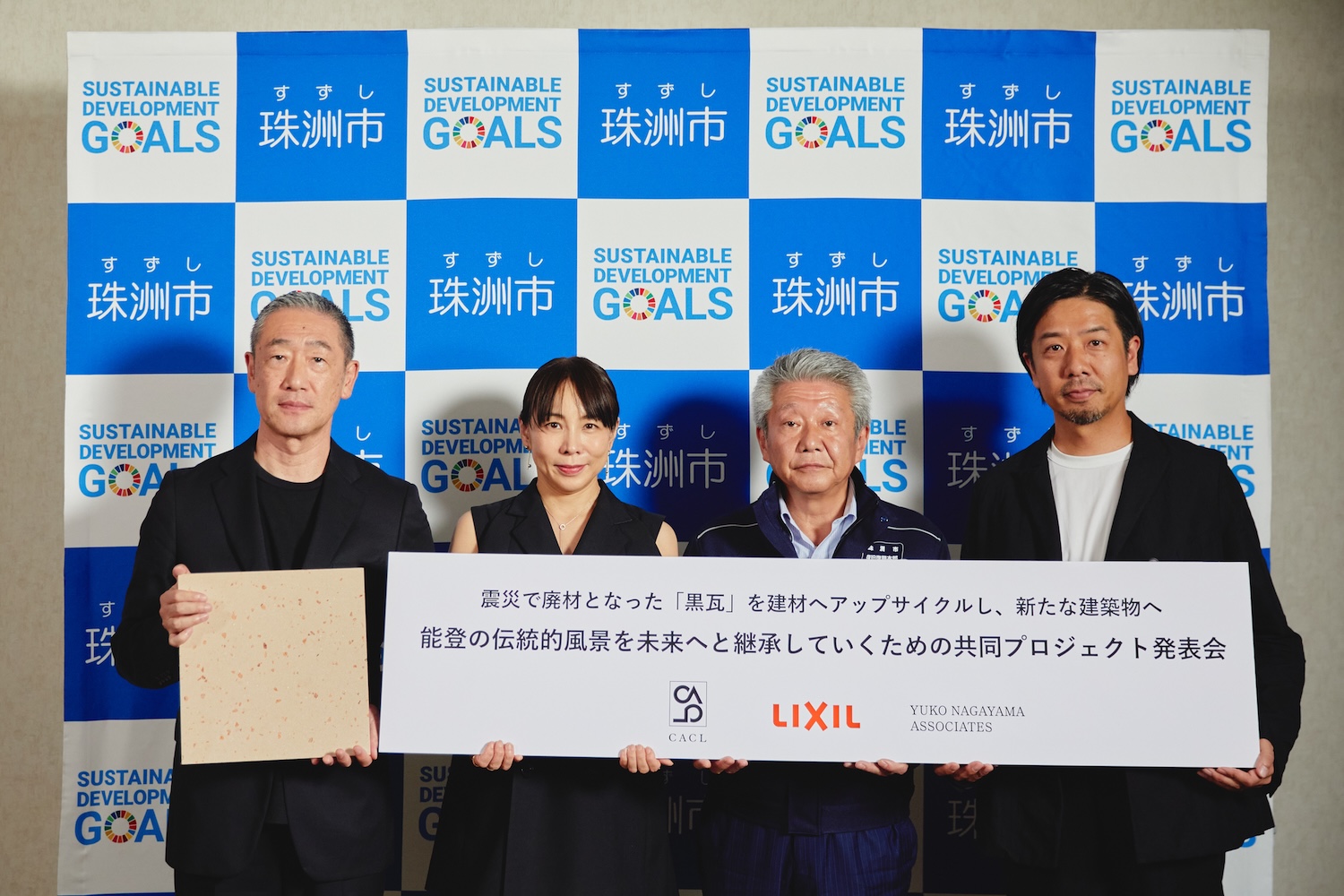
From left: Yutaka Haga, Executive Officer, Leader of Design & Brand Japan Division, LIXIL Corporation;
Yuko Nagayama, Principal, Yuko Nagayama & Associates;
Masuhiro Izumiya, Mayor of Suzu City, Ishikawa Prefecture;
Junichi Okuyama, President & CEO, CACL Inc.
CACL Inc. (hereinafter “CACL”), LIXIL Corporation (hereinafter “LIXIL”), and Yuko Nagayama & Associates Inc. (hereinafter “Yuko Nagayama & Associates”) held a press conference on September 1, 2025, to announce their joint project aimed at upcycling black roof tiles from houses destroyed by the 2024 Noto Peninsula Earthquake into new building materials. With the attendance of Masuhiro Izumiya, Mayor of Suzu City, Ishikawa Prefecture, a press event and on-site tour were conducted at Suzu City Hall for the media.
Project Overview
This project is a comprehensive initiative that regards the black roof tiles used in houses completely or partially destroyed by the Noto Peninsula Earthquake not as waste, but as a symbol of “creative recovery.” By upcycling them into new building materials, the project seeks to carry forward the sentiments and memories of Noto into the future.
Currently, houses that were fully or partially destroyed by the earthquake are demolished under the government-funded demolition program (※), with contractors separating the materials, which are then transported to regional collection sites before ultimately being discarded at disposal facilities nationwide. In this project, CACL—coordinating local stakeholders and focusing on the potential of roof tiles—has partnered with LIXIL, which possesses advanced building material technologies and promotes circular resource use, and Yuko Nagayama & Associates, which initiated the concept, connected the two companies, and supervises the design and application of the materials in architecture. Together, the three companies have established a framework to upcycle black roof tiles from government-demolished houses into new building materials.
⸻
※ Government-Funded Demolition: A system under which municipalities, upon request from property owners, carry out the demolition and removal of houses (including residences, vacant homes, barns, and other structures) that sustained partial or total destruction in the 2024 Noto Peninsula Earthquake.
For further details on the project, please refer to the official press release here.
About the Project Announcement
At the project presentation held at Suzu City Hall, four speakers took the stage:
• Masuhiro Izumiya, Mayor of Suzu City, Ishikawa Prefecture
• Junichi Okuyama, President & CEO of CACL Inc.
• Yuko Nagayama, Principal of Yuko Nagayama & Associates Inc.
• Yutaka Haga, Executive Officer, Leader of Design & Brand Japan Division, LIXIL Corporation
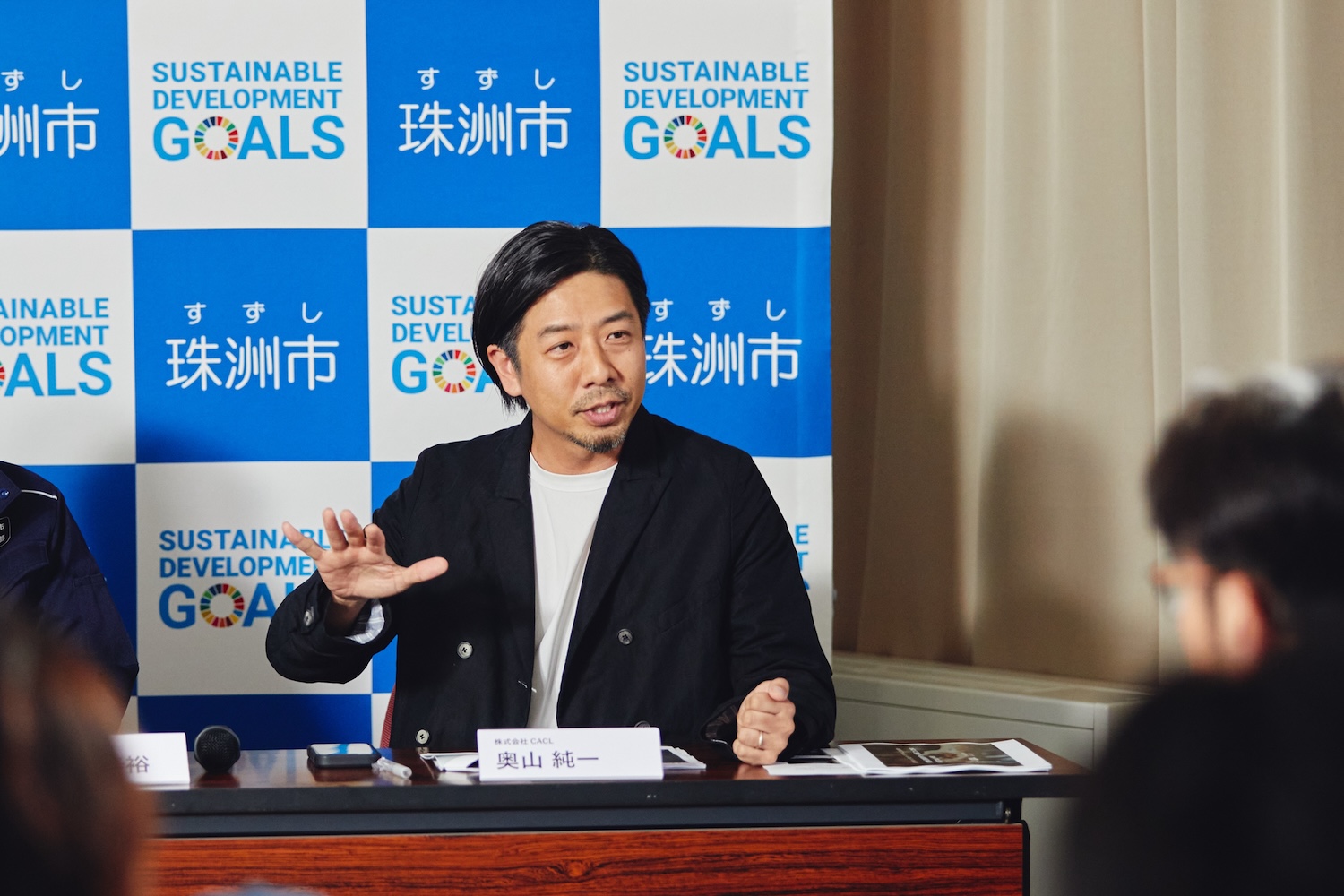
Junichi Okuyama, President & CEO, CACL Inc.
First, Junichi Okuyama, President & CEO of CACL Inc., spoke about the ideas and sentiments behind the birth of the project. He explained CACL’s activities to discover new value in ceramic fragments and shared how he encountered fragments of black roof tiles during recovery support efforts in Suzu.
Okuyama noted, “I was struck by the beauty of the contrast between the orange revealed in the fractured cross-sections and the black surface of the tiles.” He also recalled, “When speaking with residents affected by the disaster, one told me, ‘Looking at the damaged house makes me feel sad, but once it is demolished, even the memory itself fades away.’”
These impressions became the inspiration for launching the initiative to upcycle black roof tile fragments.
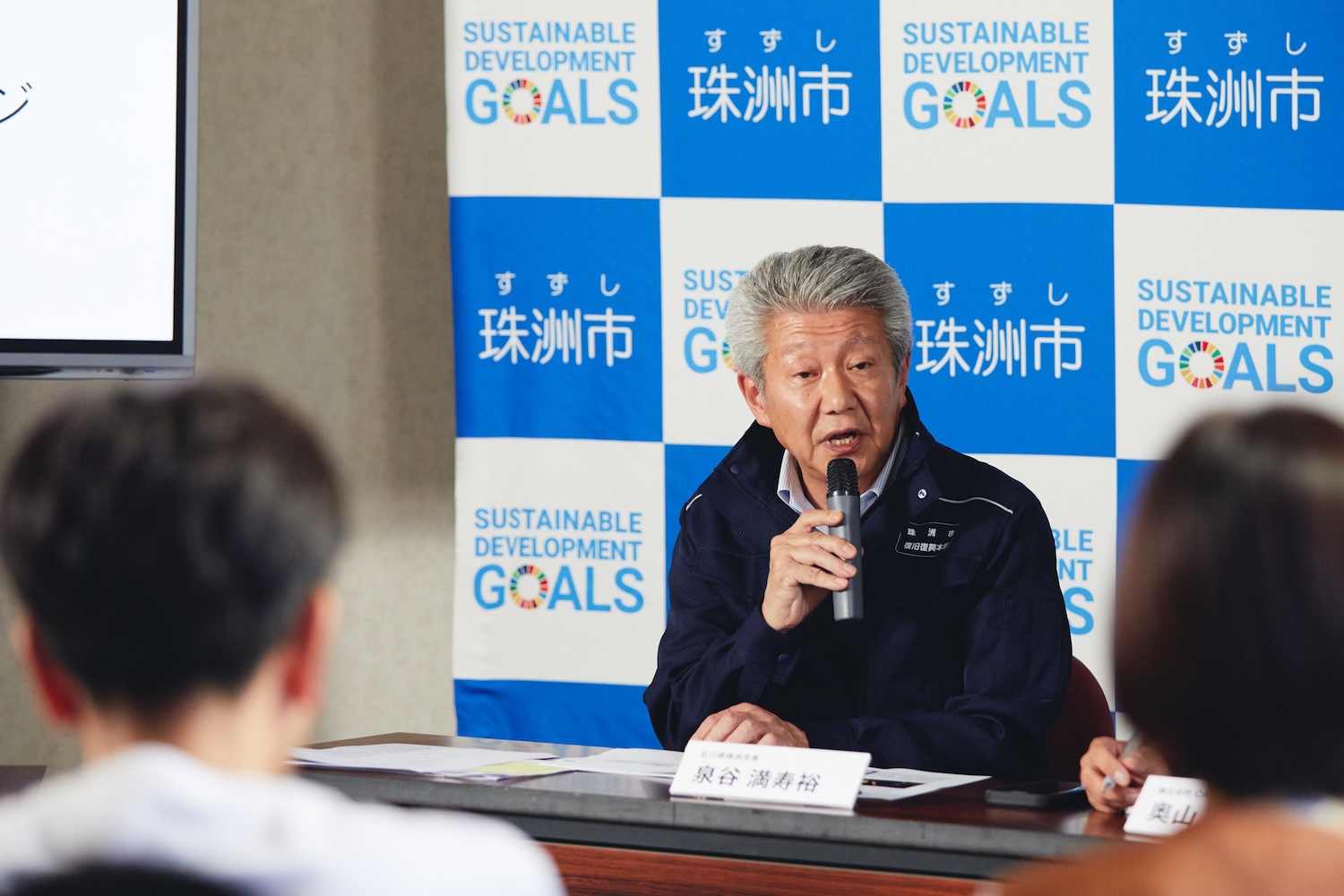
Mayor Masuhiro Izumiya, Suzu City, Ishikawa Prefecture
Masuhiro Izumiya, Mayor of Suzu City, Ishikawa Prefecture, explained the current situation of the city:
“With the earthquake and tsunami on New Year’s Day last year, followed by the torrential rains in Oku-Noto that September, Suzu suffered extremely severe damage. Of the approximately 5,600 households in Suzu, more than 1,770 were completely destroyed. Including partial destruction, around 3,900 homes—about 70% of the total—were affected. Furthermore, about 2,800 applications have been filed for government-funded demolition. In other words, roughly half of all houses in Suzu are slated to be demolished under this program.”
He went on to share his feelings:
“In Suzu, black roof tiles are a source of pride and a cultural treasure. To see the houses that used them collapse was heartbreaking. Moreover, with the continuing closure of businesses, there are now no companies left capable of producing black roof tiles. That is why it is truly encouraging to have a collaborative project like this one take root in Suzu and make use of these tiles. The fact that black roof tiles from government-demolished houses can be reborn and preserved carries great significance, and I sincerely hope this project will expand and flourish from here.”
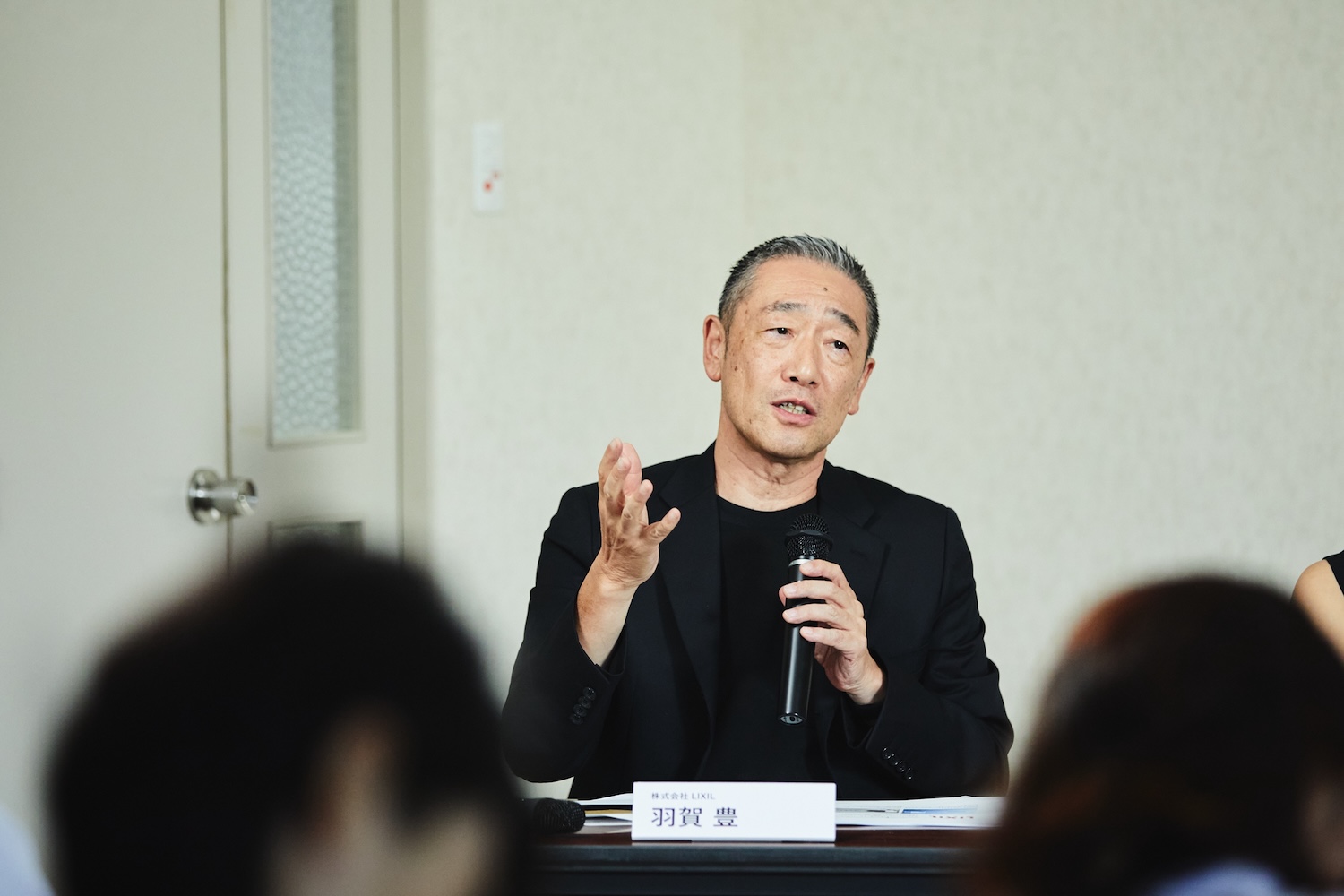
Executive Officer Yutaka Haga, Head of Design & Brand Japan Division, LIXIL Corporation
Yutaka Haga, Executive Officer and Leader of the Design & Brand Japan Division at LIXIL Corporation, began by introducing examples of the company’s materials that contribute to promoting circular resource use. These included the PremiAL series, a line of circular, low-carbon aluminum with a higher ratio of recycled aluminum, and revia, a material that fuses waste wood with almost all types of waste plastics—including composite plastics that were previously difficult to recycle and often disposed of through incineration or landfilling.
He stated, “Recycling is often thought of as upcycling discarded materials, which is indeed important. But in this case, I also see great potential in how locally rooted black roof tiles, infused with the sentiments of the community, can be given new value once again.”
Haga further elaborated on the background of developing this material using LIXIL’s textone technology, highlighting its technical features—such as making the most of the gentle hues of the tiles’ natural orange tones and carefully considering the size of the tile fragments incorporated.
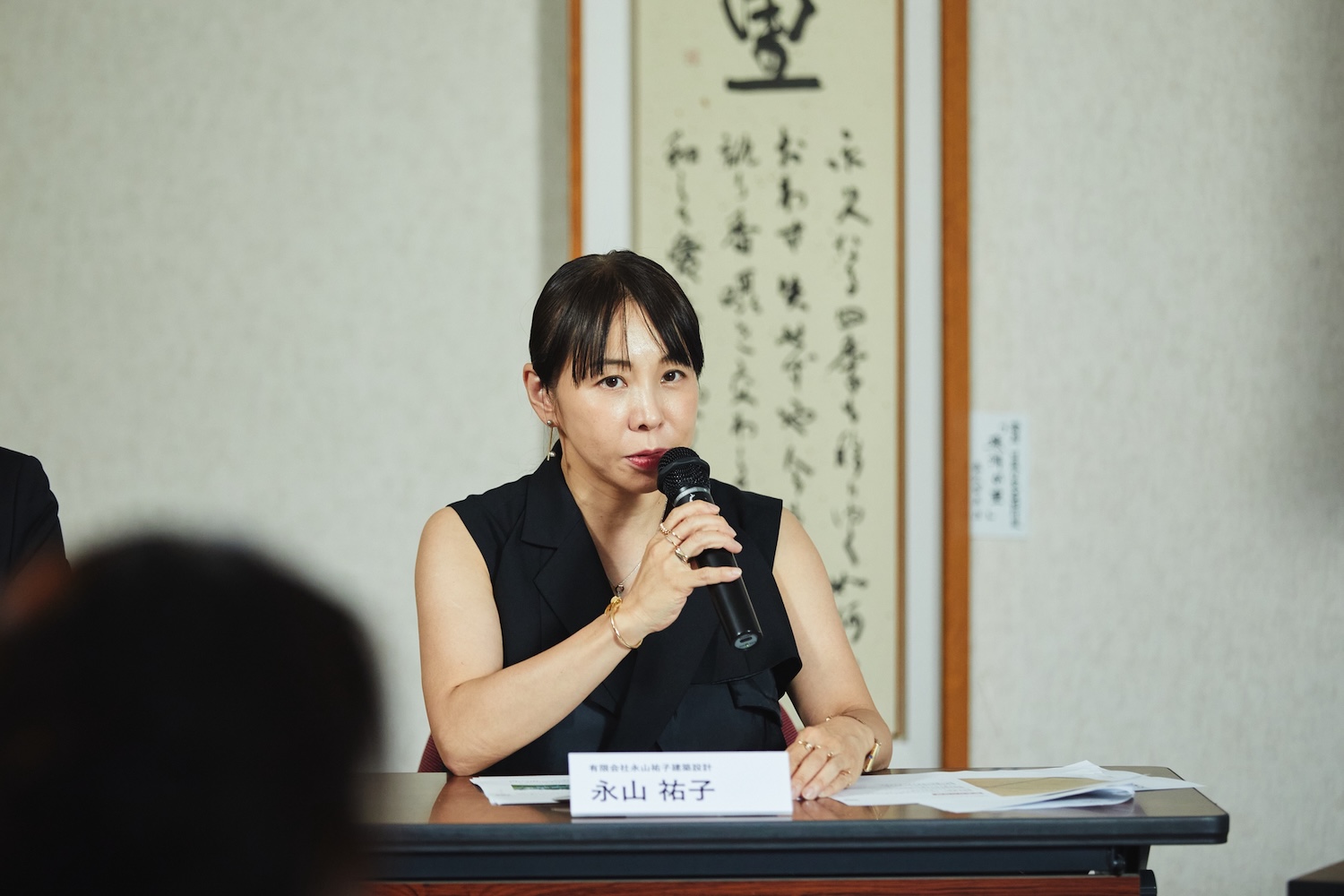
Yuko Nagayama, Representative Director, Yuko Nagayama & Associates Inc.
The event concluded with remarks from Yuko Nagayama, Principal of Yuko Nagayama & Associates Inc., who has overseen the material’s design direction and is planning its future applications in architecture. Drawing on examples such as the Women’s Pavilion at Expo 2025 Osaka, Kansai—which is scheduled to be reused at the International Horticultural Exhibition 2027—and the Panasonic Group Pavilion “Nomono no Kuni,” she highlighted the commitment of the collaborating companies to reuse and sustainability.
She also recalled meeting Mr. Okuyama in Venice, where, while walking together across stone-paved streets, she suggested the idea of using ceramic fragments in building materials. Speaking about the unique potential of architecture, she explained: “The value of architecture lies in its capacity to use materials on a large scale, which in turn can generate employment, skills, and design innovation.”
Nagayama added: “We are currently considering applications in large-scale commercial facilities, but the goal is not to monopolize this approach. Rather, I hope that by involving even more people, this initiative will expand into something even more exciting.”

(Left) Temporary storage site for black roof tiles in Suzu City
(Right) Kenta Kaji, Senior Managing Director, Safety Co., Ltd.
After the press conference, a media tour was conducted around Suzu City. The first stop was a temporary storage site for black roof tiles collected from houses demolished under the government-funded demolition program. Guided by Kenta Kaji, Senior Managing Director of Safety Co., Ltd., which has been contracted for demolition and collection, participants observed the massive piles of tile fragments gathered from across Suzu City.
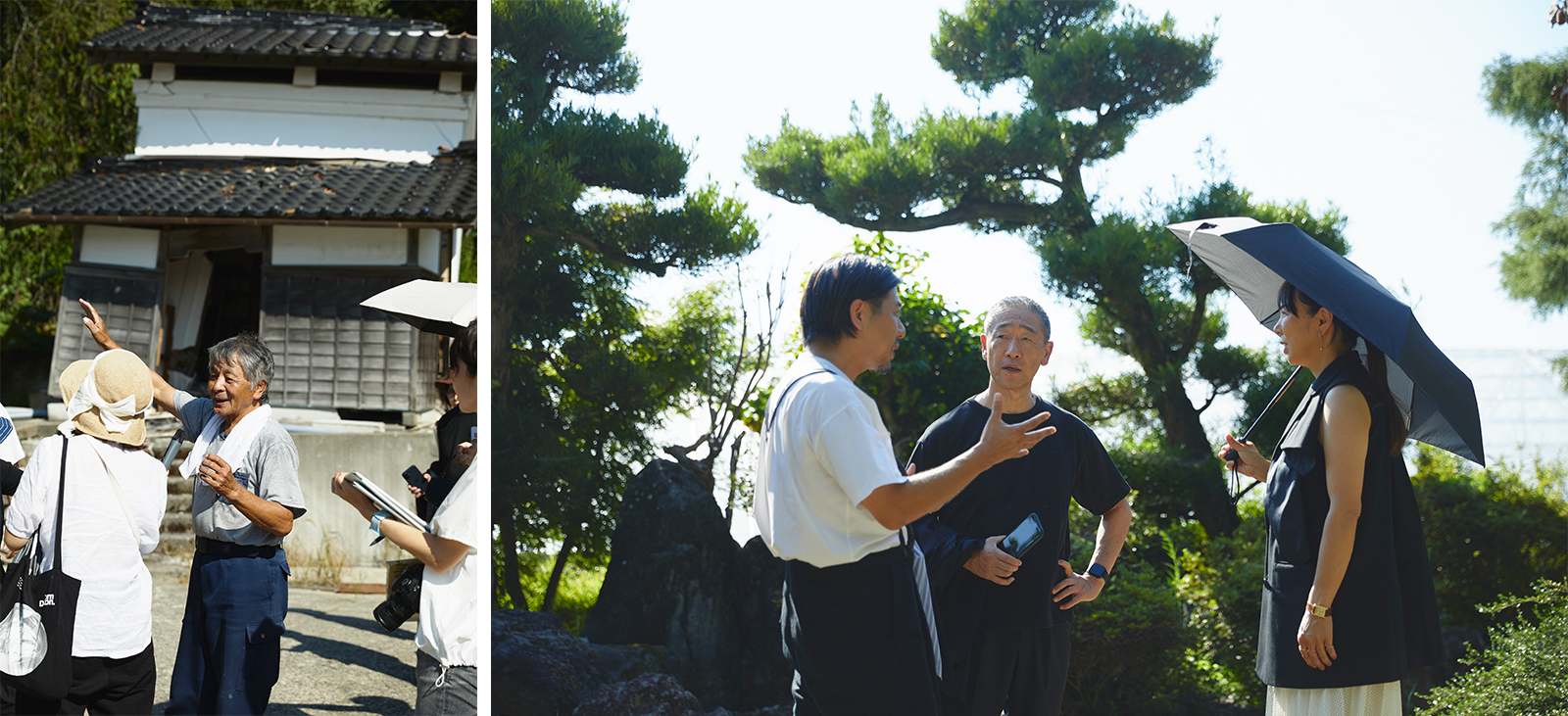
Left: Yasuaki Yachi explaining
Right: Three presenters discussing in front of a house
The media tour concluded with a visit to the home of Mr. Yoshiaki Yachimae in Suzu City, whose house had been certified as completely destroyed due to the collapse and is awaiting government-funded demolition. He explained the damage to his home and shared his thoughts on the project, saying:
“I had heard that roof tiles are no longer being produced in Ishikawa Prefecture, and I felt disappointed. That is why, when I learned about this project, I was truly glad to know that the tiles could be put to use, even in a small way.”
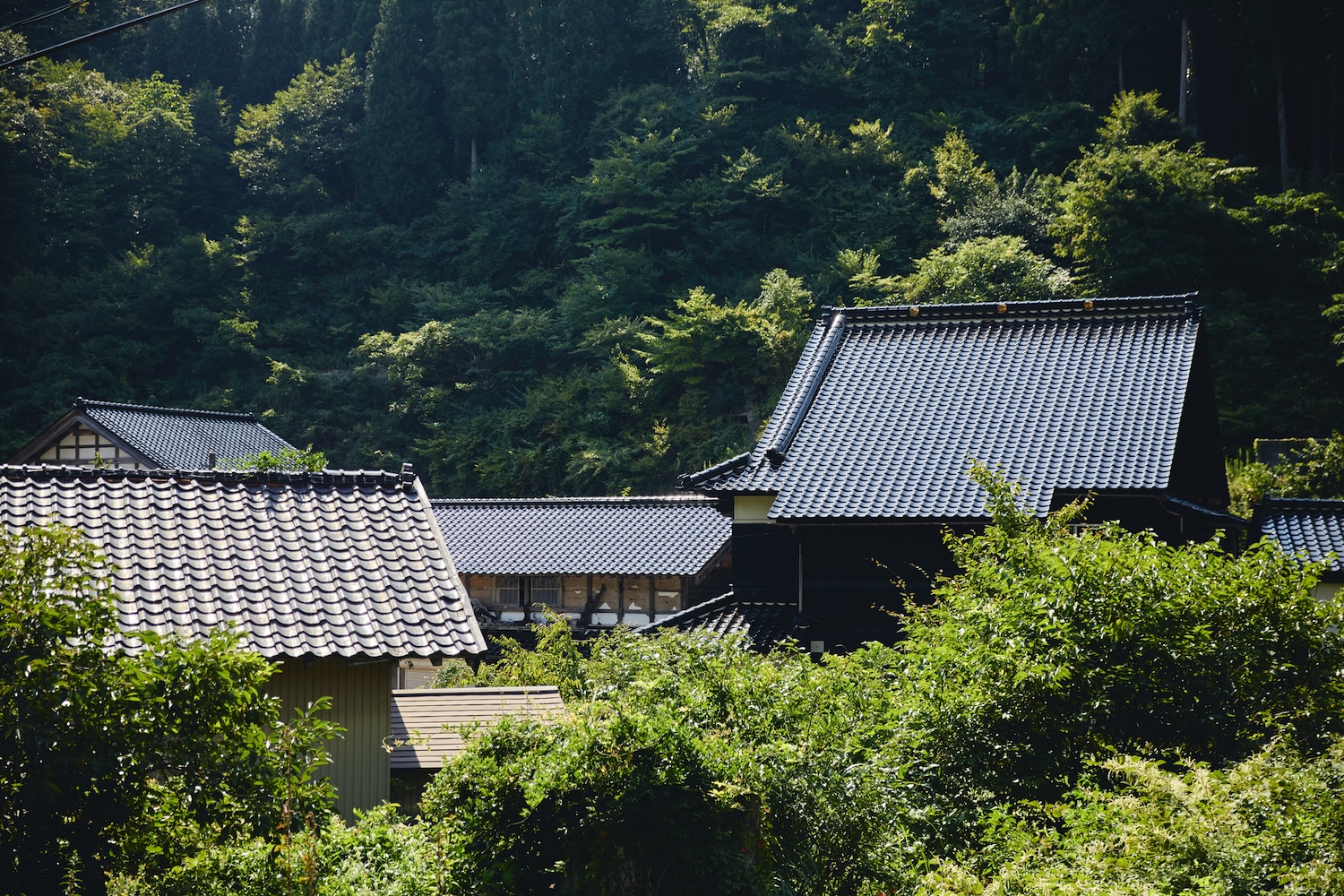
The Landscape of Black Roof Tiles as a Symbol of Noto’s Culture
About the Material
Fragments of black roof tiles are used as raw material for LIXIL’s original decorative building material textone, which incorporates natural-derived substances as design elements. Developed as a special “Noto Tile Edition,” this material highlights the gentle orange hue inherent in the fragments—distinct from the strong, dark impression of the tiles’ original surfaces—creating a soft and warm coloration. Thanks to textone’s unique technology, which preserves a certain granular texture, the scenery once shaped by Noto’s black roof tiles can be visibly brought back to life.
※ For more details on textone, please see here.
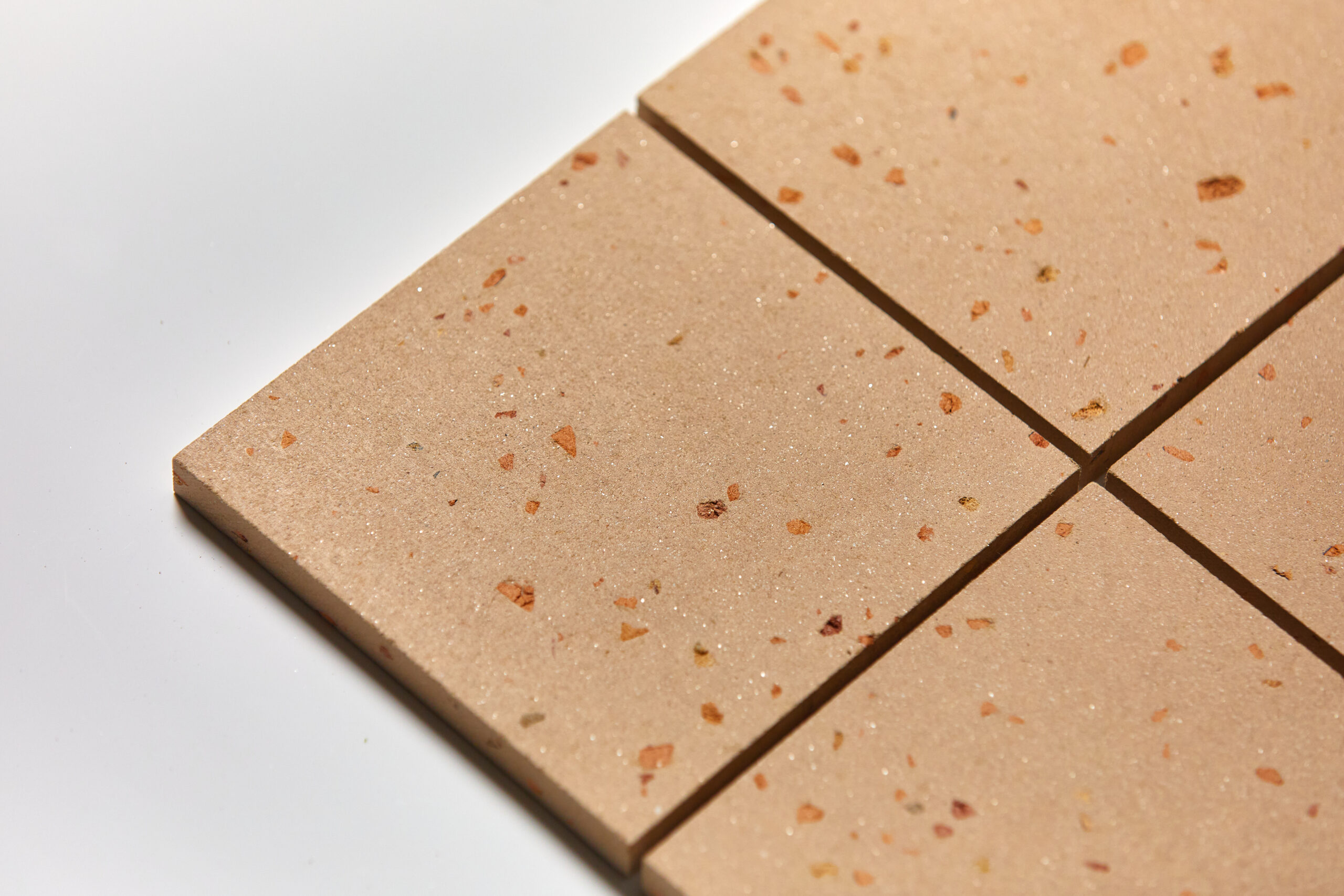

Company Profiles
CACL Inc.
Based in Nomi City, Ishikawa Prefecture—renowned for Kutani ware—CACL addresses two interrelated challenges: the shortage of successors in traditional crafts, and the limited, low-wage employment opportunities for people with disabilities. To tackle these issues, the company develops projects that merge traditional crafts with inclusive employment.
In response to the 2024 Noto Peninsula Earthquake, CACL launched the Stand with NOTO project, establishing temporary workshops for Wajima lacquerware artisans and creating new employment opportunities. Building on this, CACL initiated the Rediscover Project, an evolved art initiative that combines Kutani shards with Suzu ware fragments and Wajima lacquer techniques. This project was showcased at the 21st Century Museum of Contemporary Art, Kanazawa in the exhibition “Dancing with All – Ecologies of Empathy.”
In July 2025, CACL launched KAKERA, an experimental brand redefining the value of discarded or non-standard traditional crafts through the exploration and production of products and materials made from ceramic fragments. The brand also announced its first collaboration with LVMH Fragrance Brands.
Yuko Nagayama & Associates Inc.
https://www.yukonagayama.co.jp/
An architectural design office led by Yuko Nagayama, an architect attracting international recognition.
Major works include: Louis Vuitton Kyoto Daimaru Store, Teshima Yokoo House, Japan Pavilion at Expo 2020 Dubai, JINS PARK, “House with a Membrane Roof,” and Tokyu Kabukicho Tower.
Awards include: JIA Newcomer Award (2014), World Architecture Festival 2022 Highly Commended (2022), and iF Design Award 2023 Winner (2023). Current projects include the Panasonic Group Pavilion “Nomono no Kuni” and the Women’s Pavilion in collaboration with Cartier for Expo 2025 Osaka, Kansai, as well as the TOKYO TORCH project near Tokyo Station.
LIXIL Corporation
https://www.lixil.com/jp/ (Global Site)
LIXIL develops and provides cutting-edge products—including toilets, bathrooms, and kitchens—as well as building materials such as windows, doors, interiors, and exteriors, all designed to address daily living challenges and create better, more comfortable homes worldwide.
Rooted in a tradition of craftsmanship, LIXIL operates iconic global brands such as INAX, GROHE, American Standard, and TOSTEM. With approximately 53,000 employees and operations in more than 150 countries, LIXIL supports the daily lives of over one billion people worldwide by delivering products designed from the perspective of everyday users.
Inquiries
Please contact us via the CACL Contact Form.

